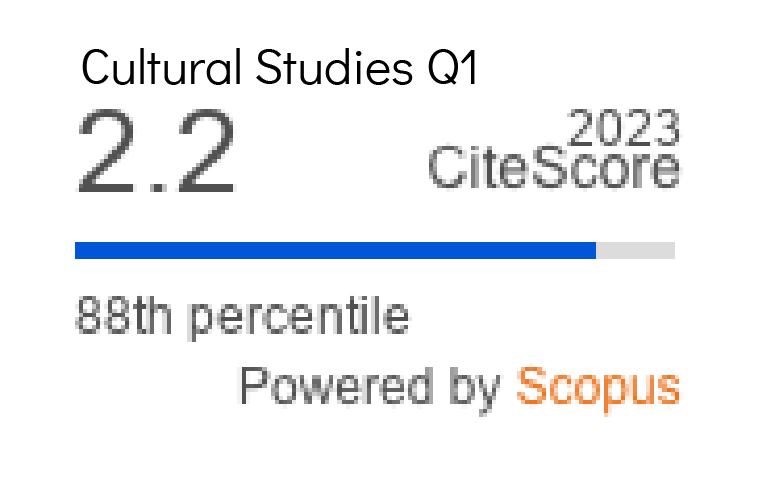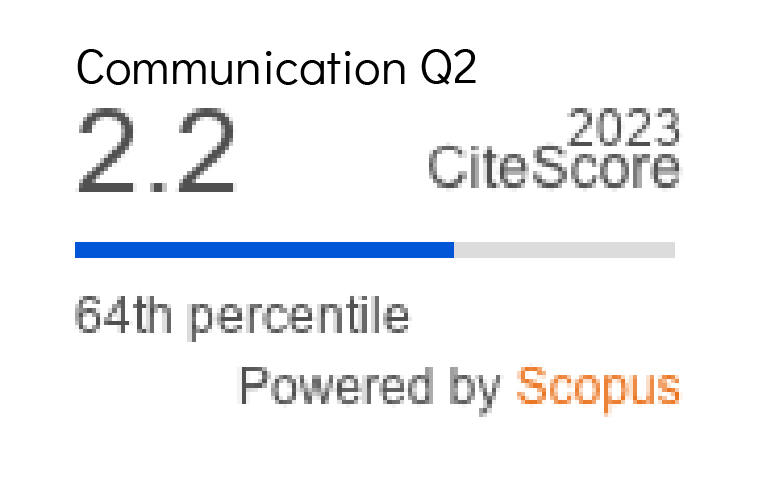Junk News y “medios de desinformación” en la campaña electoral del 10-N
DOI:
https://doi.org/10.14198/MEDCOM2020.11.2.19Palabras clave:
Desinformación, propaganda, junk news, fake news, comunicación políticaResumen
Las noticias basura, junk news, forman parte del ecosistema desinformativo utilizado para alterar e influenciar a los ciudadanos durante las campañas electorales. Esta investigación analiza el contenido producido por varias páginas españolas, identificadas como “medios de desinformación”, antes y durante la campaña electoral del 10 de noviembre en España.
A través de la herramienta Junk News Aggregator del Instituto de Internet de Oxford se han identificado las webs españolas que suelen distribuir contenido basura, es decir partidista, de ideología extrema y con enfoque claramente propagandístico. Se pretende conocer cuál es su agenda de contenidos políticos, la autoría de sus publicaciones, el tratamiento realizado a las formaciones políticas y sus representantes e identificar si hay variación en su actividad durante el periodo electoral. Se observan estrategias de contenido y publicaciones comunes, de enfoque partidista, falta de identificación en la autoría y un claro sesgo ideológico a favor de Vox.
Citas
Asch, S. E. (1951). Effects of group pressure upon the modification and distortion of judgment. In H. Guetzkow (Ed.), Groups, leadership and men. Pittsburgh, PA: Carnegie Press.
Bolsover, G. & Howard, P. (2019). Chinese computational propaganda: automation, algorithms and the manipulation of information about Chinese politics on Twitter and Weibo. Information, Communication & Society, 22(14), 2063-2080. http://doi.org/gfdbpn
Castillo, C. (26/11/2019). Google Discover: las fake news inundan los móviles Android en plena lucha contra la desinformación. eldiario.es. En: http://bit.ly/2NT3TGI
Fletcher, R.; Cornia, A.; Graves, L. & Nielsen, R. K. (2018). Measuring the reach of "fake news" and online disinformation. Reuters Institute. http://bit.ly/2TPhe6P
Gallacher, J. D.; Barash, V. Howard, P. N. & Kelly, J. (2017). Junk News on Military Affairs and National Security: Social Media Disinformation Campaigns Against US Military Personnel and Veterans. Data Memo 2017. Oxford, UK: Project on Computational Propaganda.
Guo, L. & Vargo, C. (2018). “Fake News” and Emerging Online Media Ecosystem: An Integrated Intermedia Agenda-Setting Analysis of the 2016 U.S. Presidential Election. Communication Research, 47(2), 178-200. http://doi.org/gfkdft
Hernández, M. y Fernández, M. (2019). Partidos emergentes de la ultraderecha: ¿fake news, fake outsiders? Vox y la web Caso Aislado en las elecciones andaluzas de 2018. Teknokultura. Revista de Cultura Digital y Movimientos Sociales, 16(1), 33-53. http://doi.org/dv37
Howard, P.; Bolsover, G.; Kollanyi, B.; Bradshaw, S. & Neudert, L. M. (2017). Junk news and bots during the U.S. Election: What were Michigan voters sharing over Twitter? Data Memo 2017. Oxford, UK: Project on Computational Propaganda.
Howard, P.; Woolley, S. & Calo, R. (2018). Algorithms, bots, and political communication in the US 2016 election: The challenge of automated political communication for election law and administration. Journal of Information Technology & Politics, 15(2), 81-93. http://doi.org/gdf34b
Kappes, A.; Harvey, A.; Lohrenz, T.; Monatgue, P. & Sharot, T. (2020). Confirmation bias in the utilization of others’ opinion strength. Nature Neuroscience, 23, 130-137. http://doi.org/dv38
Liotsiou, D.; Kollanyi, B. & Howard, P. (2019). The Junk News aggregator: examining junk news posted on Facebook, starting with the 2018 US Midterm Elections.
Marchal, N.; Kollanyi, B.; Neudert, L. M. & Howard, P. (2019). Junk News During the EU Parliamentary Elections: Lessons from a Seven-Language Study of Twitter and Facebook. https://bit.ly/3bEetuh
Magallón, R. (2019). Unfaking news. Madrid: Pirámide
Moravec. P.; Minas, R. & Dennis, A. (2019). Fake News on Social Media: People Believe What They Want to Believe When it Makes No Sense At All. Management Information Systems Quarterly, 43(4), 1343-1360. http://doi.org/dv39
Nikolov, D.; Oliveira, D. F. M.; Flammini, A. & Menczer, F. (2015). Measuring online social bubbles. PeerJ Computer Science, 1(38). http://doi.org/dv4b
Olmo, J. M. (08/05/2015). Púnica fabricó hasta 50 noticias positivas a la semana para Bankia y Telefónica. ElConfidencial.com. http://bit.ly/2Rl0TFq
Pariser, E. (2017). El filtro burbuja. Cómo la red decide lo que leemos y lo que pensamos. Madrid. Taurus.
Rodríguez-Fernández, L. (2019). Desinformación: retos profesionales para el sector de la comunicación. El Profesional de la Información, 28(3). http://doi.org/dv4c
Rodríguez-Ferrándiz, R. (2019). Posverdad y fake news en comunicación política: breve genealogía. El Profesional de la Información, 28(3). http://doi.org/dv4d
Sarabia, D. (28/10/2019). Los periodistas 'fake' de Periodista Digital: identidad falsa, foto sacada de Internet y currículum inventado. eldiario.es. http://bit.ly/2GegAI0
Venturini, T. (2019). From Fake to Junk News, the Data Politics of Online Virality. In D. Bigo; E. Isin, & E. Ruppert (Eds.), Data Politics: Worlds, Subjects, Rights. London: Routledge. http://doi.org/dv4f
Vosoughi, S.; Roy, D. & Aral, S. (2018). The spread of true and false news online. Science, 359(6380), 1146-1151. http://doi.org/gc3jt6
Descargas
Estadísticas
Publicado
Cómo citar
Número
Sección
Licencia
Derechos de autor 2020 Leticia Rodríguez-Fernández

Esta obra está bajo una licencia internacional Creative Commons Atribución-CompartirIgual 4.0.
Los autores y autoras que publican en esta revista están de acuerdo con los siguientes términos:
1 Derechos de autor. Los autores y autoras conservan sus derechos de autor, aunque ceden a la revista de forma no exclusiva los derechos de explotación (reproducción, distribución, comunicación pública y transformación) y garantizan a esta el derecho de primera publicación de su trabajo, el cual estará simultáneamente sujeto a la licencia indicada en punto 2. Los autores pueden establecer otros acuerdos adicionales para la distribución no exclusiva de la versión de la obra publicada en la revista, siempre que exista un reconocimiento de su publicación inicial en esta revista.
© Los autores.
2 Licencia. Los trabajos se publican en la revista sujetos a la licencia de Reconocimiento 4.0 Internacional de Creative Commons (CC BY 4.0); los términos se pueden consultar en https://creativecommons.org/licenses/by/4.0/
Esta licencia permite a terceros compartir (copiar y redistribuir el material en cualquier medio o formato) y adaptar (remezclar, transformar y crear a partir del material para cualquier finalidad, incluso comercial), siempre que se reconozca la autoría y la primera publicación en esta revista (Revista Mediterránea de Comunicación (RMC) / Mediterranean Journal of Communication (MJC), Universidad de Alicante, DOI de la obra), se proporcione un enlace a la licencia y se indique si se han realizado cambios en la obra.
3 Política de autoarchivo. Se recomienda a los autores que difundan sus trabajos a través de Internet para favorecer una circulación y difusión más rápidas y, con ello, un posible aumento en la citación y alcance entre la comunidad científica y académica, en las siguientes condiciones:
No se permite a los autores depositar en un repositorio institucional o temático, página web propia, etc., las versiones preprint (versión antes de ser evaluada) o postprint (versión evaluada y aceptada para su publicación) de sus trabajos antes de su publicación, pero sí el artículo final publicado (versión del editor).












